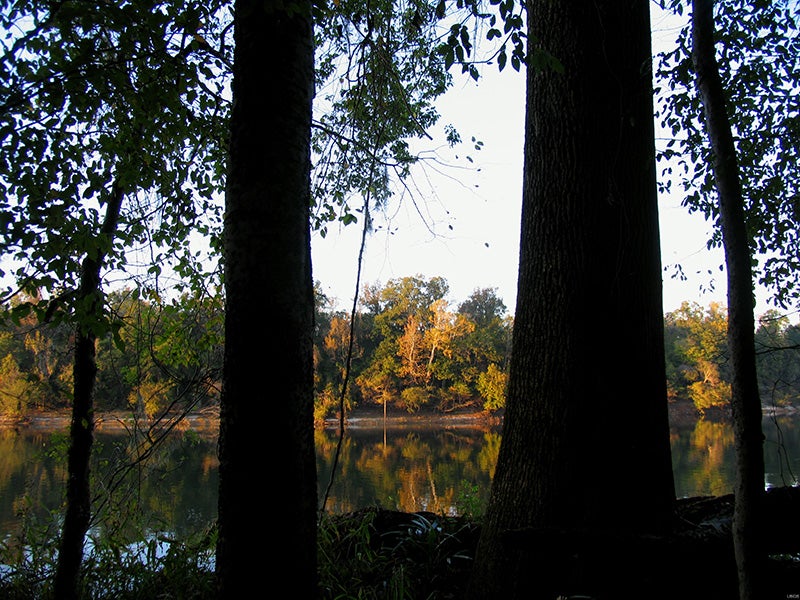Conservationists Sue To Stop Toxic Coal Ash Pollution Leaking Into Apalachicola River
Gulf Power’s coal plant leaking a toxic brew into public waters
Contact
On behalf of three conservation groups, Earthjustice has filed a federal lawsuit to stop toxic water pollution that is leaking into the Apalachicola River from an aging 40-acre coal ash dump at Gulf Power Company’s Scholz Generating Plant near Sneads, Florida. The groups say Gulf Power is illegally discharging dangerous pollutants—including arsenic and lead—into the river, threatening people and the environment in the most ecologically-diverse area of the southern U.S.
Gulf Power, a subsidiary of the $38-billion Southern Company, has flushed millions of gallons of toxic coal ash sludge into 40 acres of unlined pits that sit atop a bluff along the Apalachicola River. The groups say the waste is leaking out of the pits and into the river, contaminating the water with pollutants including arsenic, cadmium, and chromium—all well-known carcinogens—as well as aluminum, barium, beryllium, copper, lead, nickel, zinc, selenium, and the neurotoxin mercury.
One test, in June 2013, found that arsenic levels coming out of the unlined pits were 300 times the amount of arsenic considered safe for drinking water.
Earthjustice filed its Clean Water Act suit in U.S. District Court in Tallahassee, Fl. on behalf of the Southern Alliance for Clean Energy, Waterkeeper Alliance, and Apalachicola Riverkeeper.
Gulf Power has a federal Clean Water Act permit, which allows it to discharge treated coal ash water and chlorinated condensing water directly into the Apalachicola through an outfall. But the groups say that contamination is leaking at other points on the site and not receiving proper treatment—and those discharges are not covered by the permit.
“This is a public hazard,” said Earthjustice attorney Alisa Coe. “Taxpayers have spent millions over the years to buy huge tracts of land around the Apalachicola to protect the river. Gulf Power does not have the right to pollute our public river, and that’s why we’re going to court.”
The toxic heavy metal leaks—and the company’s decision not to report them—violate Gulf Power’s federal permit requirements under the Clean Water Act.
“On any given day, you can find people boating and fishing on the Apalachicola just downstream of Gulf Power’s toxic waste dump. This illegal pollution threatens the health of people who use the river and everything in it,” said Waterkeeper Alliance attorney Pete Harrison. “This plant was built in 1953, and it is a dinosaur that is illegally polluting one of the most incredible rivers in the Southeast. It’s not fair for one corporate polluter to get away with fouling the water that belongs to us all.”
Apalachicola Riverkeeper Dan Tonsmeire points out that the river and estuary support a multi-billion seafood industry in the Gulf of Mexico including a world renowned oyster fishery in Apalachicola Bay.
“The Apalachicola is not just a local asset, it’s a national treasure that needs to be protected,” Tonsmeire said.
Ulla Reeves, who directs the High Risk Energy Program for the Southern Alliance for Clean Energy, says the massive piles of coal ash waste from power plants are a pressing pollution threat throughout the region—even at retiring facilities like the Scholz Plant. Forty percent of the coal ash pits—which the industry calls “impoundments” or “lagoons”—are located in the Southeast.
“This February in North Carolina, a stormwater pipe below a massive Duke Energy coal ash impoundment failed, spilling 140,000 tons of toxic pollution into the Dan River,” Reeves said. “This coal ash sludge now coats the bottom of the Dan River for 70 miles downstream, and the full health and economic impacts of this spill are still adding up. A tragedy like that on the Apalachicola would devastate the river and those who depend on it.”

Additional Resources
About Earthjustice
Earthjustice is the premier nonprofit environmental law organization. We wield the power of law and the strength of partnership to protect people's health, to preserve magnificent places and wildlife, to advance clean energy, and to combat climate change. We are here because the earth needs a good lawyer.